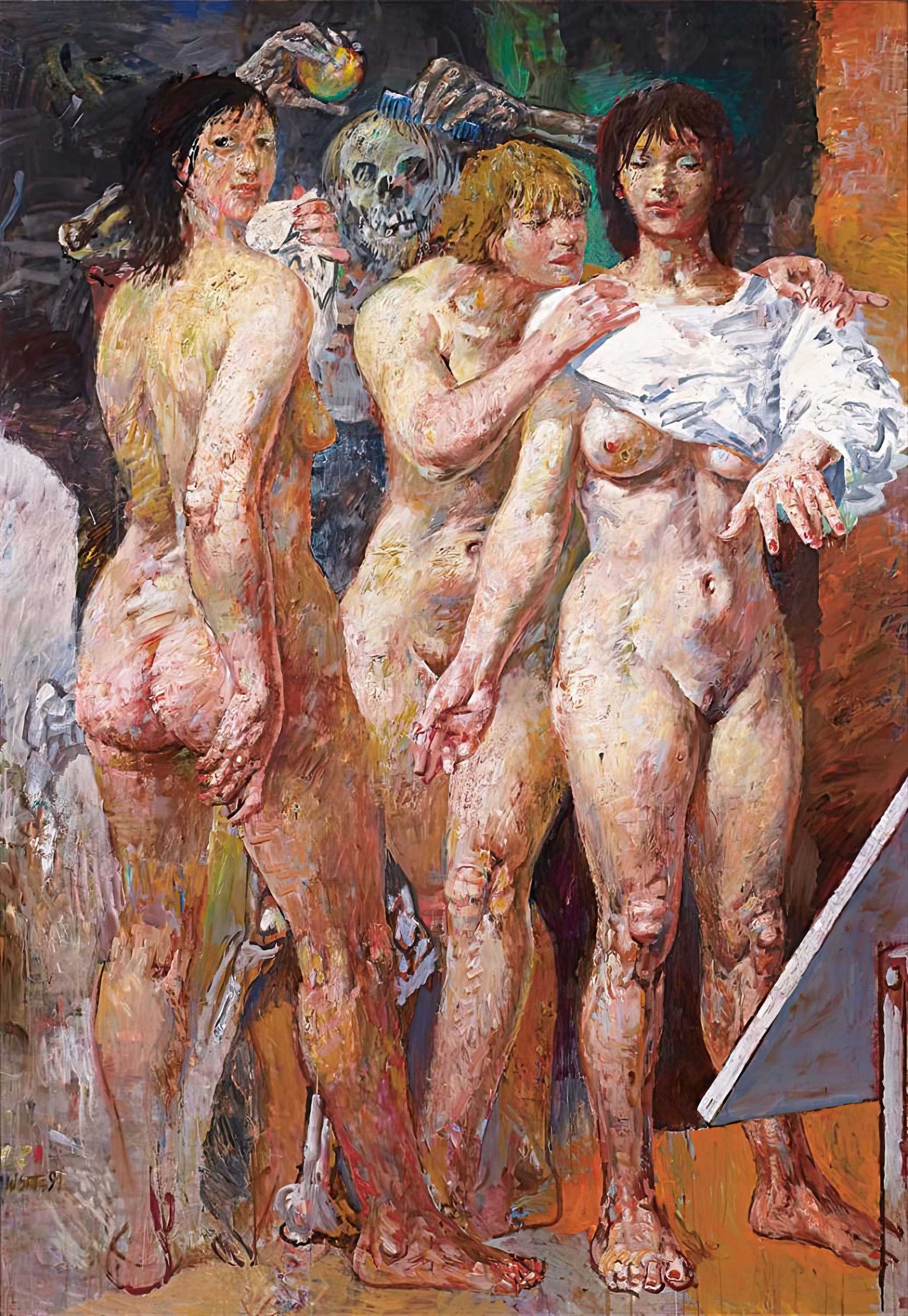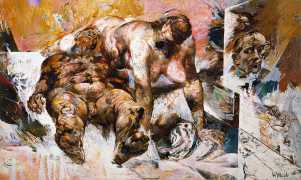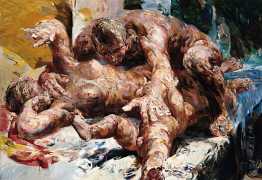It seems profoundly appropriate that in 2013, the year Willi Sitte died, the Willi Sitte Gallery in Merseberg was showing an exhibition of more than eighty of his paintings featuring naked bodies, titled Leben mit Lust und Liebe (Life with Lust and Love).
As Sebastian Preuss wrote in a 2021 issue of the magazine Weltkunst, ‘Sitte’s paintings are just as polarising as his politics. “Better to be drawn from life than be painted by Sitte” was a common saying in the GDR; everyone who took even a smidgen of interest in art had his unmistakable style in mind – swelling workers in the factory, nudes on the beach and in the sauna, couples making love, their bodies voluptuous and heavy, painted with expressively shimmering brushstrokes, transforming them into vibrant, often fraying shapes. There was a lot of Rubens in Sitte’s paintings, but also late Lovis Corinth. Sitte’s steamy neo-baroque exalts industrial labour, invokes solidarity against the evil forces of capitalism, and portrays people in their private lives as sensual, lustful participants.’
Sitte stated that the intention of his art was to adhere to the human figure and to offer a celebration of good and a defense against evil. He trod a fine line between the abstract art highly praised in the west and the Stalinist-influenced realism propagated in the east, with a bold enthusiasm for experimentation. He was searching for a visual language that – without abandoning the importance of artistic tradition – would not slip into trivial realism. And he did like the texture and movement of skin, seeing sex as part of the honest socialist endeavour.
This comprehensive selection of Sitte’s paintings embraces work from the early 1950s to the mid-1990s, showing the development from Picasso-esque early works to the powerful mythology-inspired groups of his later work.
























































